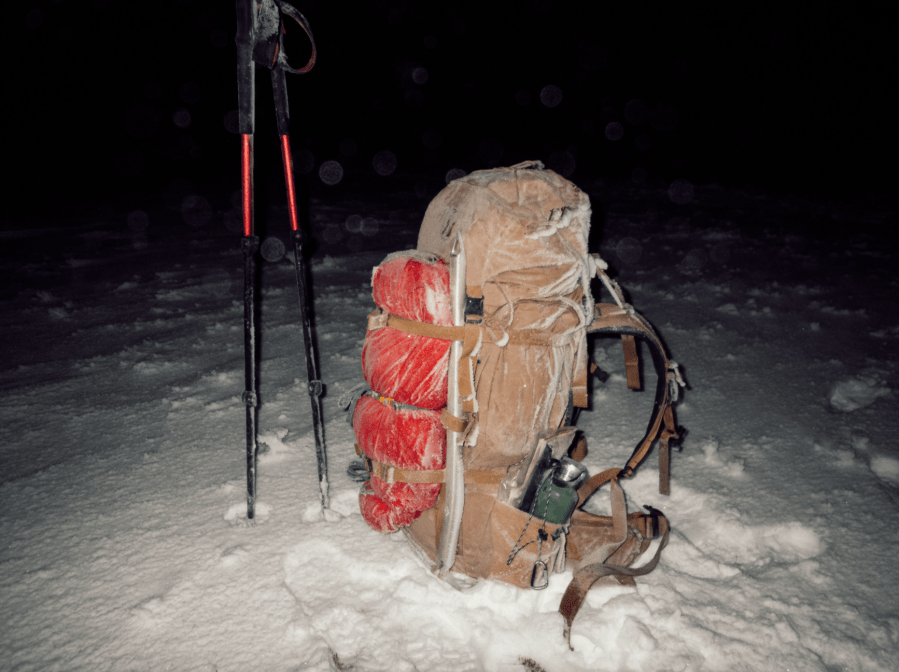Alex Roddie dubs the Fjällräven Kajka 55 his Greener Choice for its durability and innovative external frame.
The Fjällräven Kajka 55 is a durable, full-featured pack designed for extended treks. It has an innovative external frame made from birch wood, said to reduce the product’s overall carbon footprint by 10%, and has the most adjustable harness of any men’s pack tested.
Alex Roddie’s Greener Choice
Overall, despite the high weight, I think this is a great choice for backpacking in deep winter conditions. It’s overkill for most three-season backpacking, though.- superb adjustable harness for heavy loads
- great for winter or expedition use
- durable design
- loads of attachment points & pockets
- recycled fabrics
- complex design overkill for some uses
- very heavy
| Quick Specs |
|---|
| Price: $395.92 / £360 Weight: 2810g (S/M) Materials: Vinylon F, recycled 500D and 210D polyamide, traceable wood Features: zipped front access to main compartment, compression cordage on lid, dual ice axe fastenings, long side compression straps for attaching items to front, hydration sleeve, detachable rain cover, load lifters Volume: 55 litres (other capacities 35 to 100 litres) Closure: detachable zipped floating lid Back: adjustable, breathable mesh, with external birch wood frame Hipbelt: cushioned, adjustable, 6 inches Pockets: large lid pocket with additional internal and external zipped pockets, 4 side pockets (2 zipped), 2 zipped hipbelt pockets Sizes: S/M, M/L Women/Mens version: no fjallraven.com |
If you’re looking at a 55L pack weighing over 2.8kg then you’re already after something robust for hauling big loads, and the Kajka 55 is really good at this. The harness is the best-padded of any of the packs I tested, and combined with its high level of adjustability (as well as really long straps) you can achieve a superb level of comfort, no matter your body shape or size. It’s so comfortable that massive winter loads felt kilos lighter than expected.
I’ve found it fantastic for multi-day, high-level winter routes in the Cairngorms and Austrian Alps. Tent and snowshoes can be strapped easily to the outside. The wooden frame is one reason for its weight. Birch wood is heavier and bulkier than aluminium, but it’s more sustainable and performs well. It looks and feels good too.

Another reason for the pack’s weight is its full-featured design, including many pockets – I particularly like the massive side pockets that sit above the side bottle/wand pockets (they do collapse flat if you don’t need them, or if you want to strap poles to the sides instead).
The side compression straps are also huge and will extend all the way over the front if needed – great for attaching a large winter tent. Another note on sustainability: the polyamide fabrics are recycled, and the product is made without PFAS.
Overall, despite the high weight, I think this is a great choice for backpacking in deep winter conditions. It’s overkill for most three-season backpacking, though.
Testing conditions
Alex tested these packs on a variety of multi-day backpacking routes in the Scottish Highlands and Lowlands as well as the Austrian Alps. They were used from autumn through to spring in a broad range of conditions. Weights are as measured on Alex’s digital scale.
This review was first published in the August 2025 issue of The Great Outdoors magazine. Compare it with others in our guide to the best backpacking packs.






